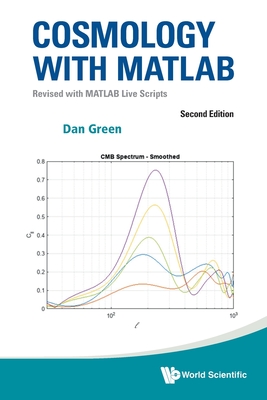Cosmology with Matlab: Revised with MATLAB Live Scripts (Second Edition)

Cosmology with Matlab: Revised with MATLAB Live Scripts (Second Edition)
The first edition of this book is now eight years old, and much has transpired since then. The MATLAB tools have evolved from scripts, to Apps and, at present, to Live code. The Live package is preferred because it combines text, figures and equations with MATLAB code all in a single package. The numerical results of that code, formerly shown separately, also appear in line and in this way the user can vary the parameters of the specific problem and explore immediately how the solutions vary in response.The physics landscape for cosmology has also evolved significantly. In 2013, the Nobel prize was awarded for the discovery of the Higgs boson, a fundamental scalar, and the first and only such fundamental particle. Nobel prizes for cosmological progress were awarded in 2017, 2019, and 2020. The present 'standard model' is that the Universe is composed of matter, photons, dark matter and dark energy. New data from surveys such as DESI and new tools such as the Webb telescope and soon the Rubin observatory are yielding a rich new set of observations which will strongly test the cosmological standard model.With the evoluti
PRP: 446.40 Lei
Acesta este Prețul Recomandat de Producător. Prețul de vânzare al produsului este afișat mai jos.
401.76Lei
401.76Lei
446.40 LeiLivrare in 2-4 saptamani
Descrierea produsului
The first edition of this book is now eight years old, and much has transpired since then. The MATLAB tools have evolved from scripts, to Apps and, at present, to Live code. The Live package is preferred because it combines text, figures and equations with MATLAB code all in a single package. The numerical results of that code, formerly shown separately, also appear in line and in this way the user can vary the parameters of the specific problem and explore immediately how the solutions vary in response.The physics landscape for cosmology has also evolved significantly. In 2013, the Nobel prize was awarded for the discovery of the Higgs boson, a fundamental scalar, and the first and only such fundamental particle. Nobel prizes for cosmological progress were awarded in 2017, 2019, and 2020. The present 'standard model' is that the Universe is composed of matter, photons, dark matter and dark energy. New data from surveys such as DESI and new tools such as the Webb telescope and soon the Rubin observatory are yielding a rich new set of observations which will strongly test the cosmological standard model.With the evoluti
Detaliile produsului









